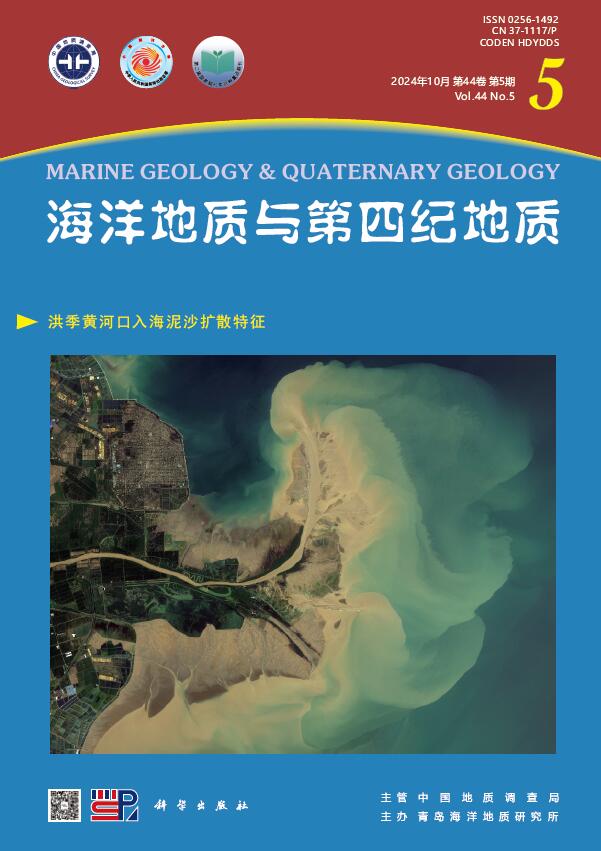EVOLUTION OF EARLY PLEISTOCENE DEEP WATER CIRCULATION IN WESTERN PACIFIC: EVIDENCE FROM BENTHIC FORAMINIFERA: EVOLUTION OF EARLY PLEISTOCENE DEEP WATER CIRCULATION IN WESTERN PACIFIC: EVIDENCE FROM BENTHIC FORAMINIFERA
引用次数: 0
Abstract
Benthic foraminifera picked out from the interval of 43.02~26.27 mbsf(meters below seafloor) of ODP 807(3°36.42′N,156°37.49′E,water depth 2 803.8 m,length 822.9 m)on the Ontong-Java Plateau,western Pacific was studied for understanding the changes in paleoproductivity and its relation with deep water circulation during the period of 2.5~1.6 MaBP.The benthic foraminifera accumulation rate(BFAR),Epifaunal/Infaunal ratio(E/I),percentage of Uvigerina spp.and total organic carbon(TOC%) were used as the proxies of paleoproductivity in this study.Results show that the change in paleoproductivity was generaly high in glacials but low in interglacials during the period of 2.5~1.6 MaBP.,except Bulimina alazanensis,of which the paleopruductivity was low in glacials but high in interglacials.It may suggest that B.alazanensis,opposite to the others,preferred a warmer environment with lower nutrients.The benthic foraminiferal fauna was dominated by Uvigerina spp.in the samples,indicating that the western Pacific deep water was under the control of the North Pacific Deep Water Mass during Early Pleistocene.西太平洋早更新世深水环流的演化:来自底栖有孔虫的证据
本文研究了西太平洋onong -爪哇高原ODP 807(3°36.42'N,156°37.49'E,水深2 803.8 m,长822.9 m)在43.02~26.27 mbsf(海底以下米)范围内的底栖有孔虫,以了解2.5~1.6 MaBP时期古生产力的变化及其与深水环流的关系。本研究以底栖有孔虫积累速率(BFAR)、底面/底面比值(E/I)、蛭形藻百分比和总有机碳(TOC%)作为古生产力的指标。结果表明,在2.5~1.6 MaBP期间,古生产力变化总体上表现为冰期变化大,间冰期变化小。除alazanensis外,其古生产力在冰期较低,在间冰期较高。这可能表明b.a alazanensis与其他物种相反,更喜欢温暖的低营养环境。样品底栖有孔虫区系以Uvigerina spp.为主,表明西太平洋深水早更新世受北太平洋深水块控制。
本文章由计算机程序翻译,如有差异,请以英文原文为准。
求助全文
约1分钟内获得全文
求助全文
来源期刊
CiteScore
0.10
自引率
0.00%
发文量
4176
期刊介绍:
Marine Geology and Quaternary Geology launched in 1981 is a bimonthly academic journal sponsored by Qingdao Institute of Marine Geology, China Geological Survey, and published by the Science Press, China.The journal aims to publish original, cutting-edge, and explorative scientific results in the field of marine geology and sea-land Quaternary geology. The journal focus on reporting the latest research achievements supported by National Natural Science Foundation Project, National Key Project and International Cooperation Project, with priority to the results in China seas, global ocean and three poles, and the comparative study results between offshore and land, regional and global scientific issues.

 求助内容:
求助内容: 应助结果提醒方式:
应助结果提醒方式:


